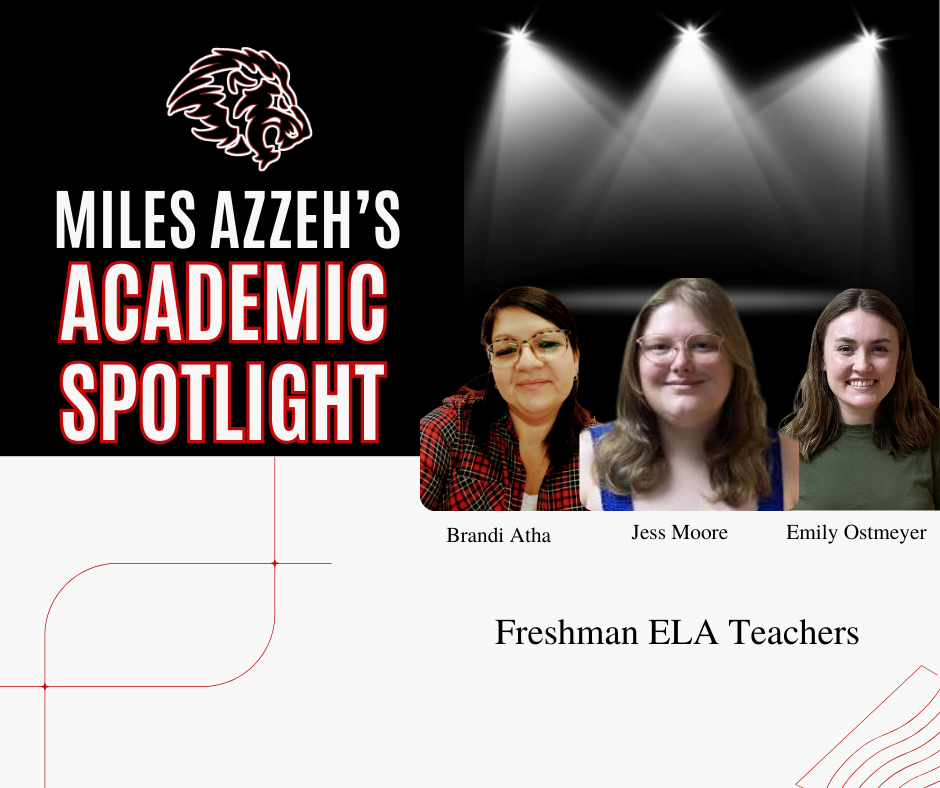Before reading Romeo and Juliet, Lansing High School freshmen participated in a hands-on research project designed to help them understand the world William Shakespeare lived in. Their English teachers Brandi Atha, Emily Ostmeyer, and Jess Moore guided students in researching culturally relevant aspects of the Elizabethan Era.
"I like the Elizabethan Museum because it gives students cultural background information about Shakespeare's time period," said Ms. Ostmeyer. "Students get general knowledge about topics like the Tudor dynasty, the Black Plague, and Elizabethan food, fashion, sports, and weapons."
Ms. Moore added that this activity also engages students well by letting them have direction on the specific topic and learning.
"This activity is great because it allows students to find topics that interest them and relate back to the text. Not only is it good for student "buy-in" to both Romeo & Juliet and the project itself, but it also allows students to become experts in their own right and take control of their own education."
Each student selected a topic, conducted research, wrote two explanatory paragraphs, and created a visual aid to showcase their findings. The Elizabethan Museum, a classroom exhibit displayed in the library, allowed all ninth graders to explore their peers' work and engage with the historical background of Shakespeare's time.
The showcasing portion is another critical component of learning:
"Knowing that their peers will be seeing what they worked on and how much effort they put in also helps students take accountability for their work," said Ms. Moore. "My students are currently working on their writing and research skills, as well as being able to defend an argument.
For students, this activity helped make Shakespeare's world feel more real and relevant:
"I liked being able to look at what everyone worked on. It was cool seeing how everyone's research came together," said Max McClary shared.
"The museum had a lot of interesting information. My favorite category was the weapons of the Elizabethan era," said Gabriel Njoku.
Teachers emphasized that this project wasn't just about history—it was about building key academic skills.
"This project aligns with Kansas State Standard RL.9-10.6, which asks students to analyze how cultural experiences shape literature," said Ms. Ostmeyer. "It also connects to research writing standards, helping students learn how to gather and present information effectively."
In addition to aligning with state standards, this project directly supports Lansing USD469's Strategic Plan to ensure a Guaranteed and Viable Curriculum (GVC) that provides meaningful, standards-aligned learning experiences. The research-based approach helps students develop essential literacy skills, critical thinking, and accountability—key components of preparing students for post-secondary success.
It also reinforces the district's focus on collaboration and communication, as students worked together to research, create, and present their findings in a way that engaged their peers. This collaborative learning has been shown to increase knowledge retention and student achievement.
Maria Chimezirim noted the impact of teacher support in this process, saying, "I liked how Ms. Moore explained things so I could understand. I had a hard time finding resources, but she helped me figure out how to use quotes."
There's no doubt this was a fantastic lesson/activity, and freshman Emma Denney summed it up nicely:
"I feel like we were all really focused during research, and the Elizabethan Museum was very well-organized. I liked making the visual aid and learning how to cite my sources professionally."
Thank you very much to Brandi Atha, Emily Ostmeyer, and Jess Moore for their experiential and collaborative learning project. Our students are lucky to have you.




